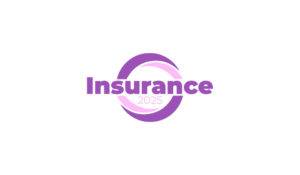8. How to file a claim
Filing a claim can seem like a daunting task, but it doesn’t have to be. First and foremost, it’s important to understand the specifics of your insurance policy and what is covered. Once you have a clear understanding of your coverage, it’s time to start the claims process.
The first step is to contact your insurance company as soon as possible. Many policies have a time limit for filing a claim, so it’s important to act quickly. You’ll likely need to provide some basic information such as your policy number, the date the incident occurred, and a brief description of what happened.
Next, you’ll need to provide any documentation related to the claim. This could include police reports, photographs, or receipts for any expenses related to the incident. Be sure to keep detailed records of all communication with your insurance company throughout the claims process.
Your insurance company will assign an adjuster to your case who will investigate the claim and determine the amount of damages covered by your policy. This process can take some time, so be patient and follow up regularly to stay up to date on the progress of your claim.
Once the claim is approved, you’ll receive a payment from your insurance company to cover the damages. Be sure to review the payment carefully and ask any questions you may have before accepting it.
Filing a claim can be a stressful experience, but with a clear understanding of your policy and a little bit of patience, the process can go smoothly and help protect your business from financial losses.
9. Common mistakes to avoid when purchasing business insurance
When it comes to purchasing business insurance, there are some common mistakes that individuals tend to make. The first mistake is not purchasing enough coverage. It’s important to assess the potential risks your business may face and purchase enough coverage to adequately protect your business from those risks. Underinsuring your business can leave you vulnerable to financial loss in the event of an unexpected incident.
Another mistake to avoid is not reading the policy carefully. It’s important to understand the details of your policy, including any exclusions or limitations, to ensure that you’re buying the right coverage for your business needs. If you’re unsure about any aspect of the policy, don’t hesitate to ask your insurance provider for clarification.
Failing to shop around for the best coverage and price is another mistake to avoid. It’s important to compare policies and prices from different insurance providers to ensure that you’re getting the best deal. Don’t just settle for the first policy you see, take the time to do your research.
Lastly, not reviewing your insurance coverage regularly is another common mistake. Your business risks and needs can change over time, and your insurance coverage should reflect those changes. Regularly reviewing your coverage with your insurance provider can ensure that you have the right coverage for your business needs.
10. The importance of regularly reviewing and updating your insurance policy.
It is essential for any business to have an insurance policy in place to protect it from potential risks and liabilities. However, simply having a policy is not enough. It is equally important to regularly review and update your policy to ensure that it continues to meet the needs of your business.
As your business evolves and grows, so do the risks and liabilities associated with it. Therefore, it is important to periodically review your policy to ensure that it provides adequate coverage for all potential risks.
For example, if you have expanded your business operations, added new products or services, or hired additional employees, your insurance needs may have changed. If your policy has not been updated to reflect these changes, you may be left exposed to new risks that are not covered by your existing policy.
Regularly reviewing and updating your insurance policy can also help you identify potential gaps in coverage and make adjustments to ensure that you have comprehensive protection. This can help you avoid costly out-of-pocket expenses in the event of a claim or lawsuit.
In conclusion, don’t just purchase an insurance policy and forget about it. Take the time to periodically review and update your policy to ensure that it continues to provide adequate protection for your business.
We hope you found this guide to business insurance helpful. While it can be overwhelming to think about all the different types of insurance your business may need, it’s important to protect your assets and investments. By taking the time to understand the types of insurance available and what risks they cover, you can make informed decisions about what policies are right for your business. Don’t hesitate to consult with an insurance professional to ensure that you get the right coverage to protect your business. Stay safe, protected, and keep growing your business!

